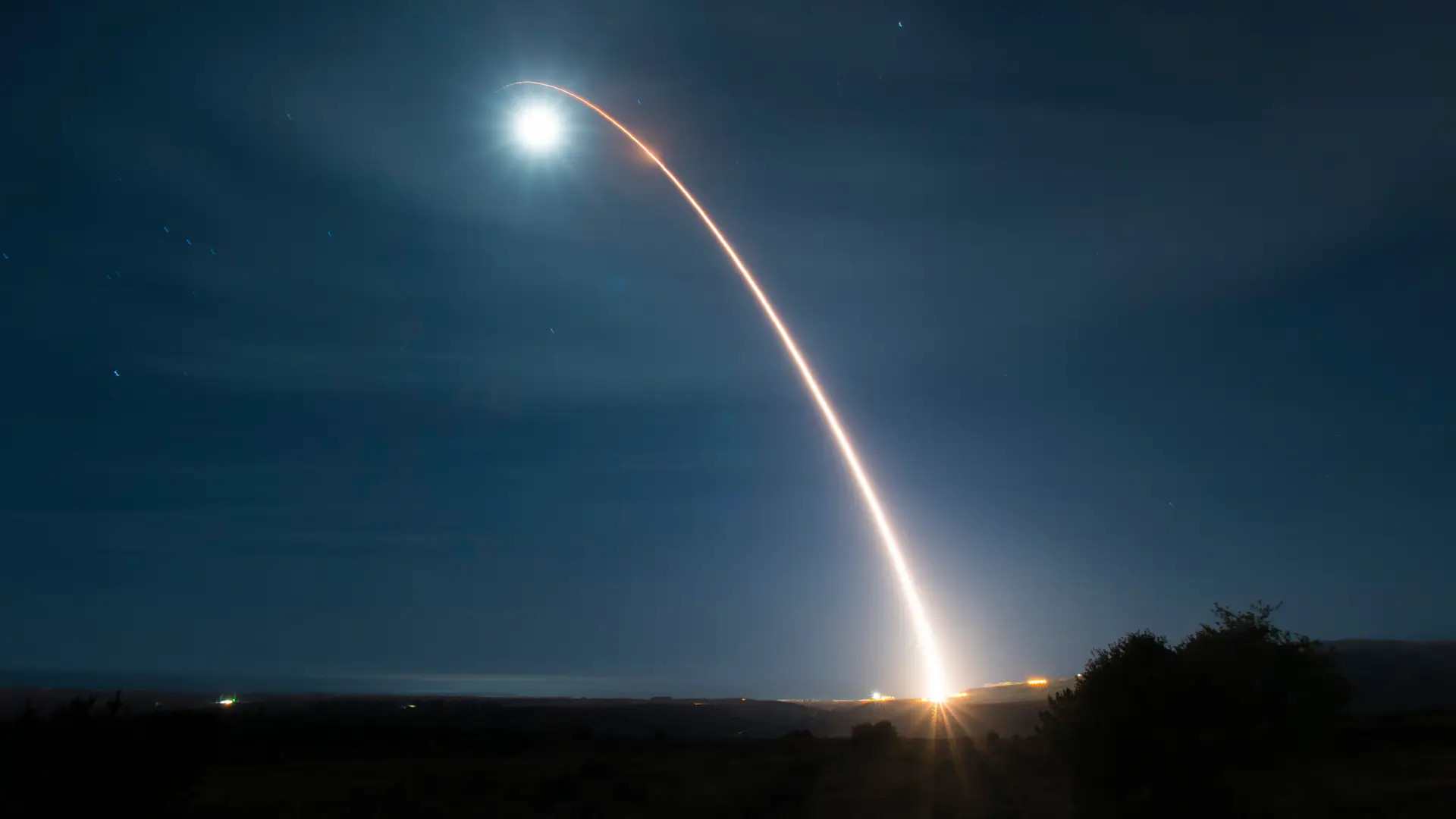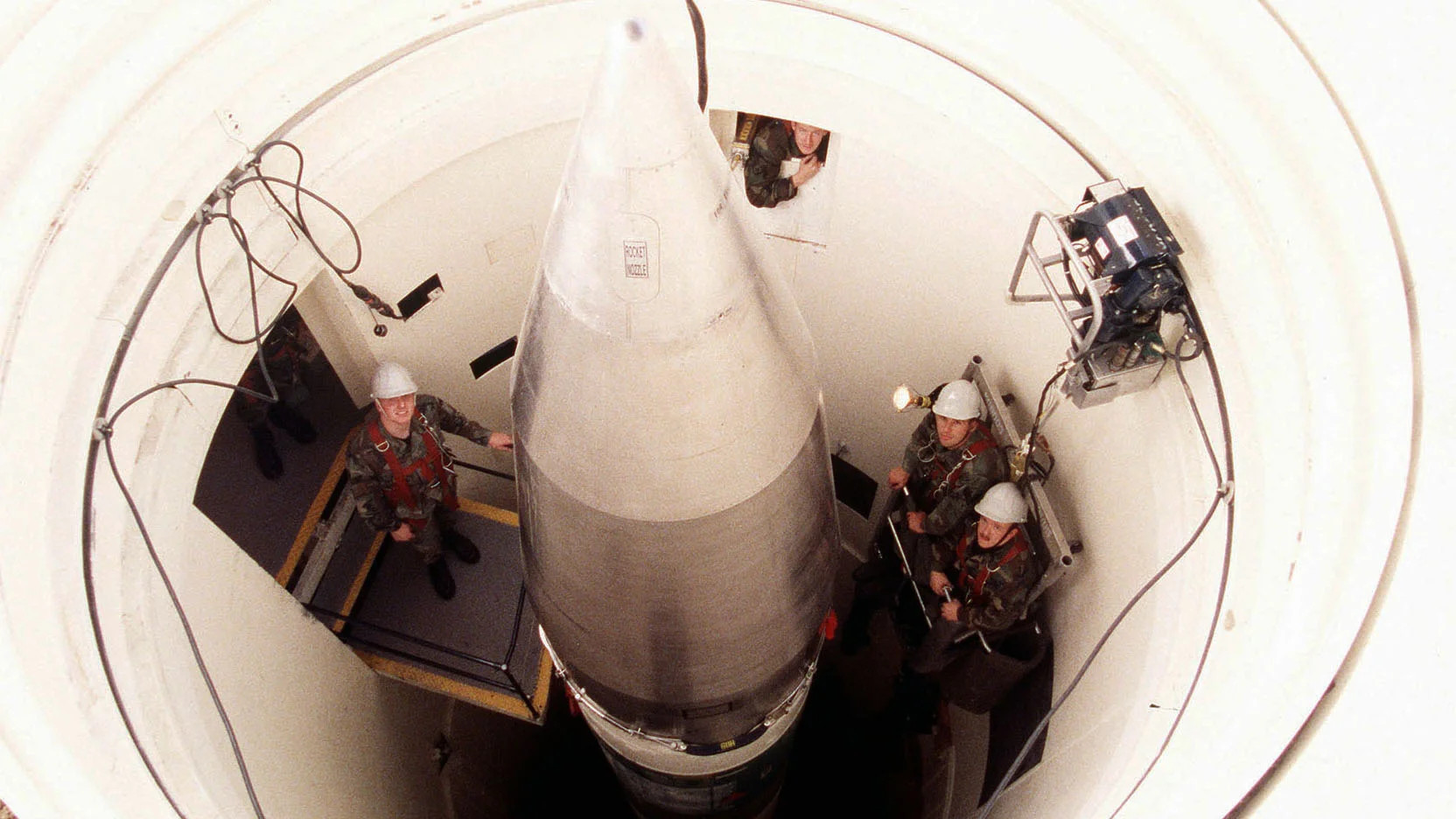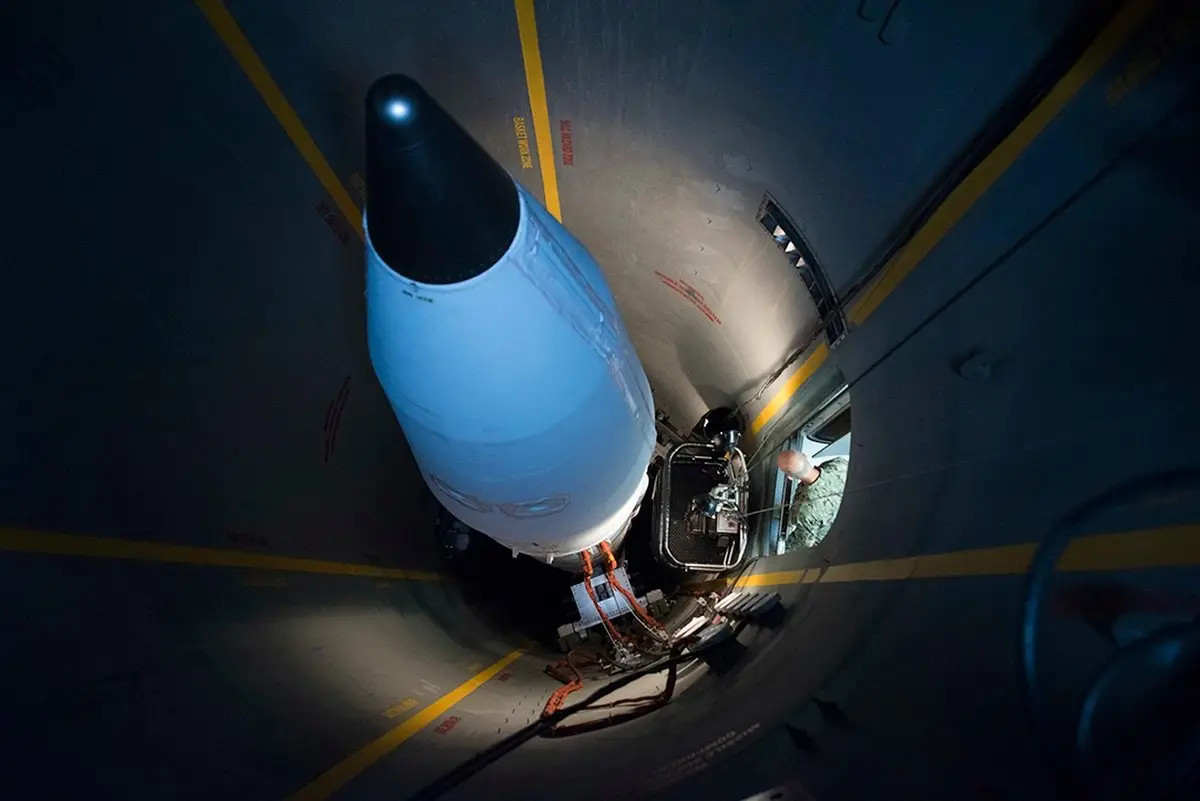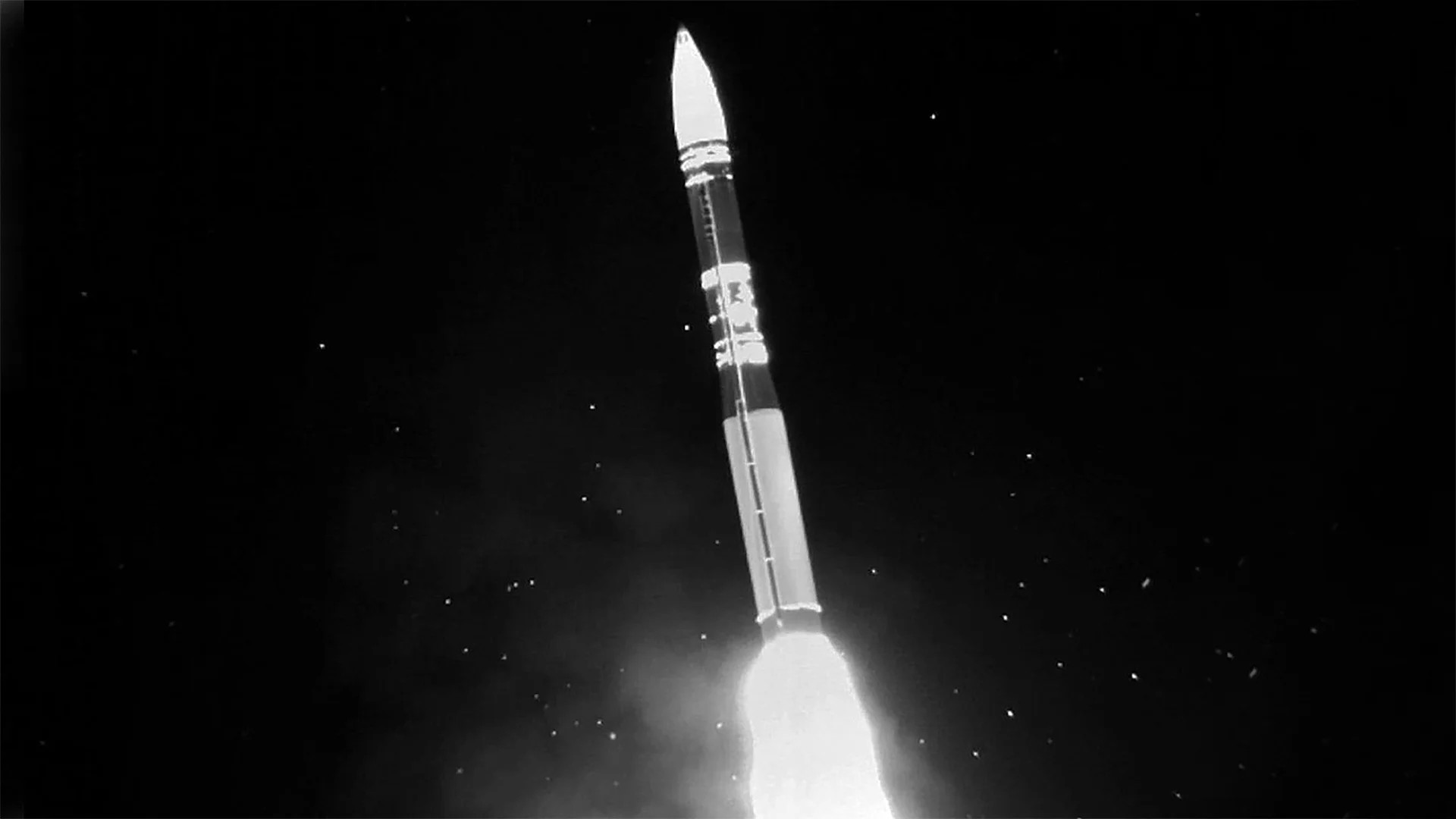The U.S. Air Force says an unarmed LGM-30G Minuteman III intercontinental ballistic missile (ICBM) was “safely terminated” over the Pacific Ocean after an unspecified “anomaly” occured during a routine test launch overnight. A delegation from South Korea also observed this particular test, in line with a new bilateral strategic cooperation agreement the country signed with the United States earlier this year.
The most recent LGM-30G missile test flight came to an end at approximately 12:06 AM PST, according to a press release from Air Force Global Strike Command (AFGSC). The missile had been launched from a test silo at what is now Vandenberg Space Force Base and U.S. Space Force’s Space Launch Delta 30 was the unit that commanded the termination – a euphemism for the self-destruction of the Minuteman III.

“An anomaly is any unexpected event during the test,” AFGSC’s press release explains. “Since anomalies may arise from many factors relating to the operational platform itself, or the test equipment, careful analysis is needed to identify the cause.”
The U.S. military routinely conducts test launches of unarmed Minuteman III ICBMs to demonstrate the reliability of these missiles, which make up one leg of America’s nuclear deterrent triad, as well as for other test and evaluation purposes. The U.S. Air Force currently has some 400 Minuteman III missiles, each loaded with a single nuclear warhead, loaded into silos spread across five states.
Last night’s failure is concerning, but identifying issues with the Minuteman III and the nuclear command and control enterprise is why these tests occur.
There are no clear indications as of yet as to what might have led to the termination of this Minuteman III test. At least one observer on the ground did capture an image showing what looked to be an unusual upswing in the trajectory of the missile after it was launched last night, as well as other potentially salient details. This could all be related to the anomaly the missile experienced or its subsequent termination.
“A Launch Analysis Group is forming to investigate the cause,” it adds. “The group will include representatives from Air Force Global Strike Command, the 377th Test and Evaluation Group, the 576th Flight Test Squadron, Space Launch Delta 30 Safety Office, and [the] Air Force Nuclear Weapons Center, among other organizations.”
The Air Force says was still able to generate some useful data from this failed test launch.
This is not the first time one of these missiles has failed or a routine test has otherwise been aborted. In 2021, the Air Force disclosed that it had aborted another routine test launch with the missile still on the ground for unspecified reasons. Before that, in 2018, the flight of another LGM-30G was terminated over the Pacific after it experienced an anomaly. There had been other Minuteman III test failures prior to that, as well.

South Korea’s Ministry of Defense was actually the first to issue a press release about last night’s Minuteman III launch, but did not make any mention of the missile’s termination.
“This joint visit by the ROK-US Department of National Defense Nuclear Consultative Group (NCG) delegation to the intercontinental ballistic missile (ICBM) launch site was carried out at the suggestion of the US as part of the ROK-US joint implementation of extended deterrence in accordance with the Washington Declaration, and the Korean side’s intercontinental ballistic missile (ICBM),” according to a machine translation of the statement. “This is the first ICBM launch observation event in seven years since 2016, and the second in history.”
The South Korean release says that officials from that country were also shown a part of the Ground-based Mid-course Defense (GMD) anti-ballistic missile system that is deployed at Vandeberg, which includes silo-launched Ground-Based Interceptors (GBI), during their visit.

South Korean officials observing the Minuteman III test follows other notable examples of new strategic engagement between the two countries, which aimed primarily at deterring North Korea, already this year. In July, a U.S. Navy Ohio class nuclear ballistic missile submarine made a visit to a South Korean port for the first time in some four decades. Last month, a U.S. Air Force nuclear-capable B-52 bomber touched down in that country, the first time one of these aircraft had landed there in at least 30 years.
“It was a good opportunity to confirm on the spot the strong will and ability of the United States to fulfill its extended deterrence pledge against the Republic of Korea,” South Korea’s Deputy Minister for National Defense Policy Heo Tae Keun said in a statement, again without mentioning the launch incident. “U.S. strategic assets, such as intercontinental ballistic missiles (ICBMs), are an empirical means of demonstrating America’s extended deterrence through action to U.S. allies and partners.”
“This intercontinental ballistic missile (ICBM) test launch is part of regular military activities, ensuring that the U.S. nuclear deterrent is effective and reliable in responding to threats in the 21st century, ensuring the security of the alliance and maintaining the power of U.S. nuclear power,” the South Korean release also quoted U.S. Principal Deputy Assistant Secretary of Defense for Space Policy Vipin Narang as having said. “It shows our preparedness well.”
As already noted, the potential for failure is, of course, one of the central reasons why the Air Force routinely tests Minuteman III missiles. This incident also comes as the service is pushing ahead with plans to replace these missiles with new LGM-35A Sentinel ICBMs. The goal is for the first operational Sentinels to be loaded into silos sometime in the next decade.

In the meantime, Minuteman IIIs will continue to be an important part of America’s nuclear arsenal, which will require routine tests like the one that just failed to help ensure their reliability.
Contact the author: joe@thedrive.com
